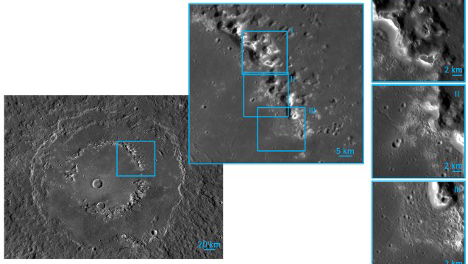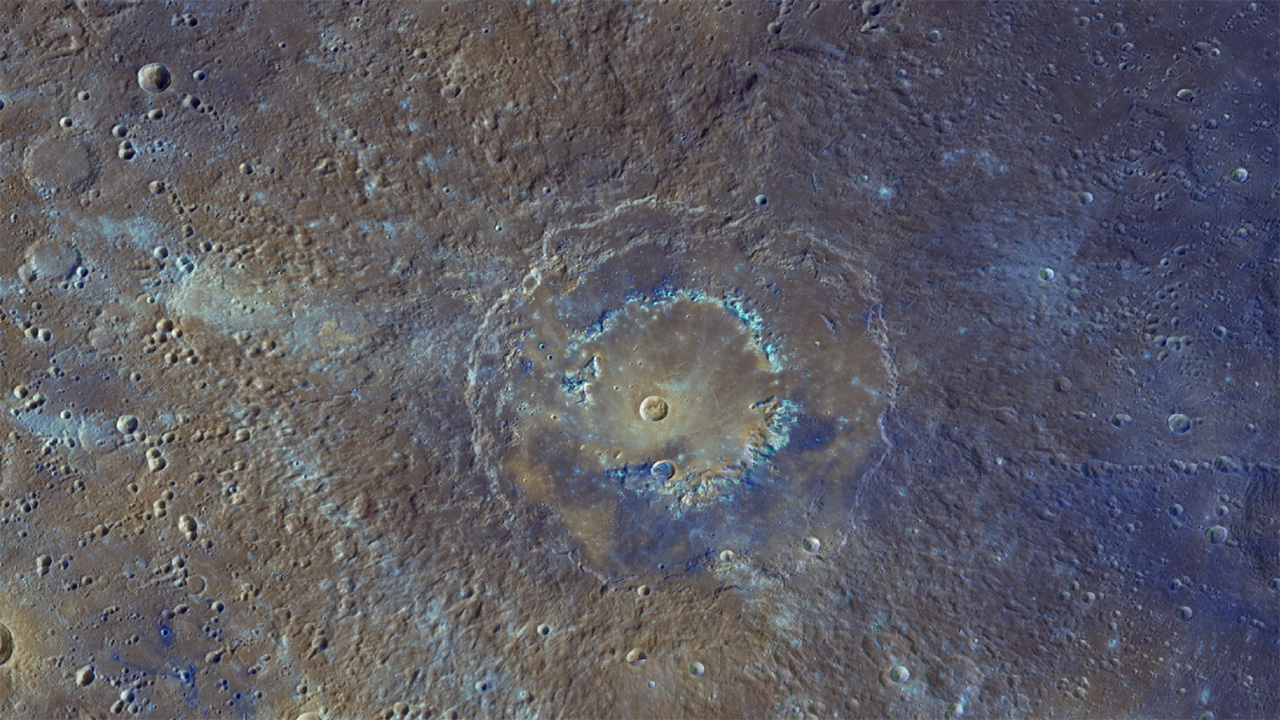The MESSENGER mission to Mercury discovered the unexpected presence of volatile elements – such as sulfur, sodium, chloride and even water hidden in permanently shadowed regions in craters near the poles. Volatiles are those materials that transform from solid to gas at lower temperatures than typical rocks.
But beyond discovering their existence, scientists are interested in understanding how these volatiles have sculpted the planet’s surface. A new paper, published in the Planetary Science Journal examines Mercury’s surface features associated with the presence of volatiles and how the presence of these volatiles are shown in the structure of the planet’s soil, called regolith.
“With the discovery of so many planets around other stars, especially those close to their Sun like Mercury, it is key to understand how volatiles can be preserved under those environmental conditions,” said lead author and PSI Senior Scientist Deborah Domingue.
The team explored the shape and structure, which scientists call morphology, of recently mapped flows and hollows on Mercury. Flows are flowing debris that require the presence of a volatile to move and are reminiscent of Earth’s landslides. Hollows, unique to Mercury, are surface depressions that form when volatiles sublime, or transform from a solid to gas.

“These features would not form without the presence of volatiles,” Domingue said. “Our goal is to understand how surfaces evolve in the presence of these materials, as well as how these materials are distributed within the upper layers of the surface.”
For their work, the team used:
- stereophotoclinometry – a technique to determine elevation variations and surface orientation;
- photometry – a technique to understand the properties, such as porosity and grain size, of the regolith;
- and machine learning algorithms to quantify correlations between terrains and regolith properties.
“Stereophotoclinometry allows us to examine the topography at the resolution of the image data. This provides us the best opportunity to map the topography of the different terrains we are studying by comparing the changes or similarities between them,” said John Weirich, a co-author and PSI senior scientist.
Photometry models the surface brightness at different angels to determine surface porosity, variations in soil grain size and composition differences.
“We use the large-scale morphologies from the images, along with the raw data from photometry models, to apply machine learning algorithms to see if there are consistent matches between morphology and surface structure,” said co-author Frank Chuang, a senior research associate at PSI.
“Each of these regolith properties is influenced by the processes that shape and form the surface – like sublimation, impact cratering and downhill movement of materials,” Domingue said.
“The study helps us understand the distribution of volatiles in Mercury’s crust,” Domingue said. “Our work supports the idea of a volatile-rich layer that can be excavated by impactors and the formation of hollows from the exposure of this volatile-rich layer.”
Other authors include Alexis Rodriguez from Marshall Space Flight Center and Mario Zarroca from the University of Barcelona.


